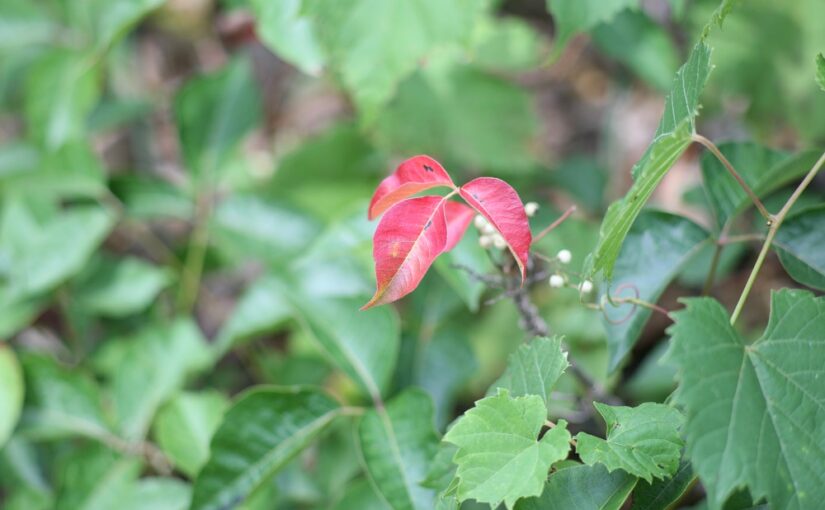So goes the easy-to-remember rhyme that’s supposed to help you identify the infamous Poison Ivy plant.
Touching Poison Ivy can result in extraordinarily unpleasant itchy blisters. So identifying this species is an important outdoor skill.
While memorable, the popular rhyme is short on details.
Should you avoid every plant with three leaves? What if it doesn’t have white berries? What should you do if you think you’ve touched it?
If you’re heading into nature and wish to return home itch-free, you’ve come across the right blog!
Identifying Poison Ivy
Lots of plants have three leaves or leaflets. How to you pick out Poison Ivy out from the rest?
Poison Ivy leaves are separated into three leaflets (each “leaf of three” is technically a single leaf). This is known as a compound leaf, like the leaves of ash and walnut trees.
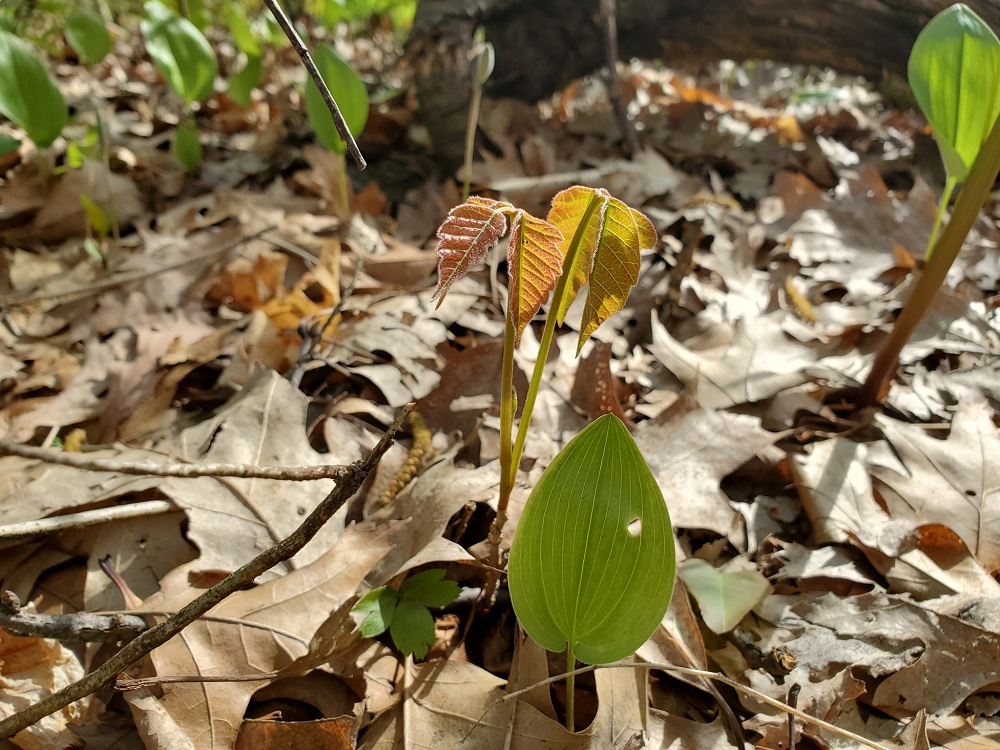
Two of the leaflets are connected to the petiole (leaf stalk) opposite one another, while the middle leaflet is connected farther out on the petiole.
Poison Ivy is not the only species that fits this description; brambles (raspberry and blackberry species) and Hog Peanut are look-alikes, although bramble stems are covered in prickles or thorns.
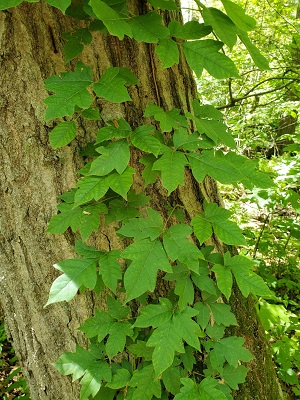
Unlike brambles, the stem we’re watching out for is woody without prickles.
To make things slightly more complicated, Poison Ivy leaflets can appear in a variety of forms.
Their edges range from smooth to very jagged and can be with or without lobes.
In spring, the leaves are often reddish or bronzy green before turning bright green in the summer.
Clusters of little green-white flowers grow on Poison Ivy in the spring, eventually giving rise to berry-like fruits in the summer, that range from grey to white in colour and are usually waxen.
Am I safe in the winter?
Unfortunately, you’ll have to keep a keen eye no matter the season.
All Poison Ivy plant parts, including the leaves, berries, and stems, contain urishurol, the substance that causes an itchy rash if touched by most humans.
That’s why it’s important to know what the plant looks like in all seasons.
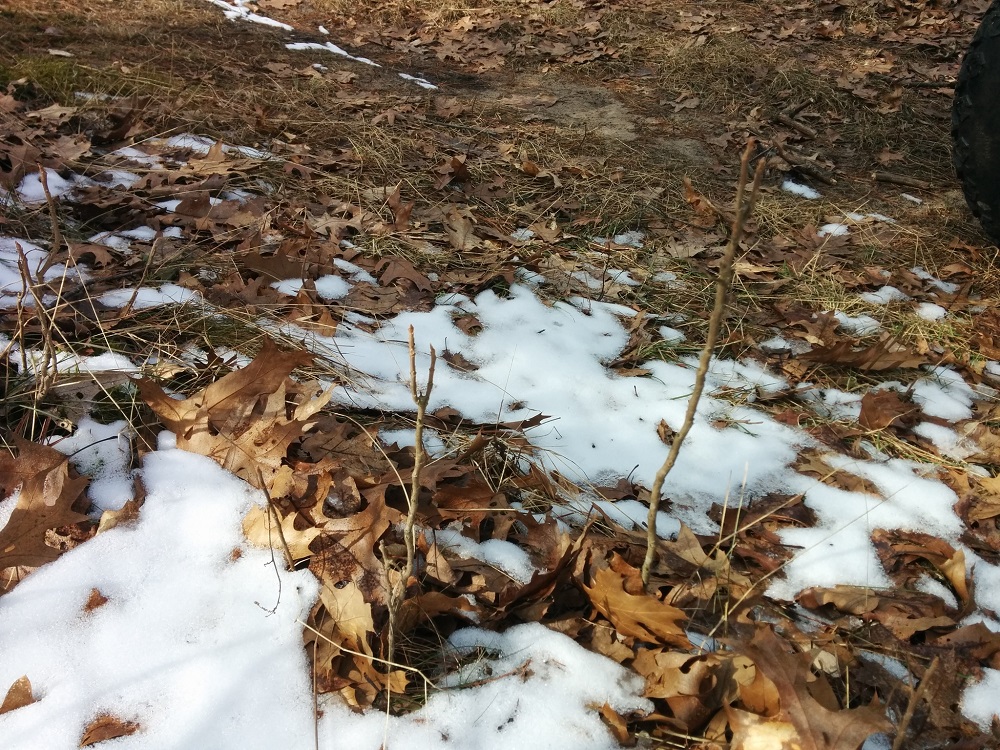
Come autumn, Poison Ivy plants in sunshine will see their leaves change to a bright orange-red or red-wine burgundy.
In shaded areas, they will turn a dull brown.
Poison Ivy’s woody stem persist through the winter. Often the plants carpet the forest floor in dense low-lying clumps. But they sometimes climb tree trunks or stand two to three feet high.
Why don’t you just get rid of it?
Poison Ivy thrives in disturbed places.
It often loves trail and campsite edges, or trampled areas like social trails.

If we try to pull or spray it, we are creating more of the conditions that this plant loves, while destroying the more sensitive neighbouring plants that are preventing Poison Ivy from completely dominating the area.
Besides, because Poison Ivy can grow like a vine, tearing it up one place doesn’t necessarily kill the plant.
Poison Ivy is also doing important ecosystem work. The network of vines and roots do an excellent job at preventing erosion, and the berries are an important food source for migrating birds in the fall.
And if you’re thinking of getting your revenge on Poison Ivy and burning it, think again!
The urushiol becomes volatilized in the smoke. That means you can inhale the poison and develop a rash in your lungs, which can be very dangerous, and even fatal!
Where does Poison Ivy grow in Ontario?
Poison Ivy is widespread in southern Ontario and grows as far north as Cochrane and Kenora.
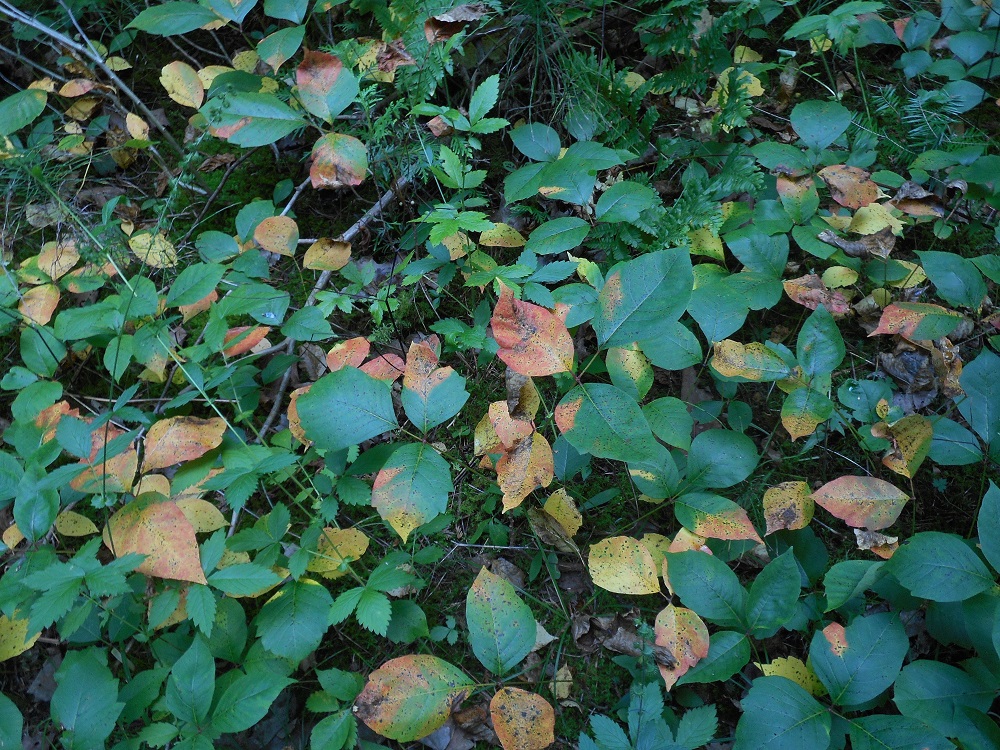
It grows most abundantly south of Lake Huron and North Bay. Those are the most densely populated areas of the province, so for most Ontarians, there’s no escaping it!
Uh oh, I think I’ve touched it… now what?
Be sure to wash any areas of your skin that may have come in contact with the Poison Ivy with soap and cold water.
Remember: cold water is key! Using hot water to wash opens your pores, increasing the chances of absorbing urushiol.
While this may not prevent a reaction, it will likely prevent an infection from spreading. If a reaction does develop, see your doctor for treatment.
Other unbe-leaf-able facts
Some people confuse Poison Ivy and Poison Oak.
But Poison Oak is not found anywhere in Ontario.

Poison Oak and Poison Sumac are in the same genus as Poison Ivy. Sumac also grows in Ontario, of course, and contains the same harmful chemical — urushiol.
That means if you touch one then the other, the effects can be compounded.
Scientists estimate 10 to 15 percent of us are immune to Poison Ivy.
But for the rest of us, our own immune system attacks our skin in the impacted area.
For us unlucky ones, the more often we’re exposed to the plant, the better our immune system gets at identifying the poison and quicker it responds — making the rash worse each time!
Humans (and possibly other primates) are the only animals known to develop a rash from Poison Ivy.

No other birds or mammals in Ontario have been found to react. But you still need to be careful — if your dog rubs up against the plant, they could transfer it to you!
